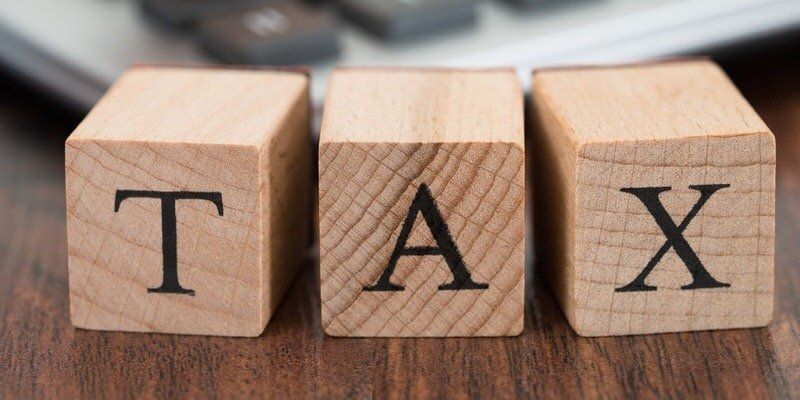The Self-Employed Dilemma
Michael Hallett • July 7, 2015

You're likely asking yourself, what is the dilemma that self-employed workers face? Well, with more and more Canadians joining the ranks of the self-employment every year one has to ask themselves how they are going to tackle the age old question, how much does one write off vs how much income does one claimed on their taxes. We all want to earn as much money as possible and pay as little income tax as required.
This was my train of thought until the topic of 'paying taxes' was brought to my attention by a friend that's an accountant. As he said, paying income tax isn't such a horrible thing, in fact it's a necessity which provides for our infrastructure and without it the 'world' we know would be drastically different. Here was the response from him after I re-posted a reference to INCOME TAX RELIEF DAY that I saw on social media.
"I would actually look at it more positively and say that I/we spent this money to live in a great country, province and municipality and its worth every penny in taxes spent. I will guarantee you there are billions of people on this planet that would switch positions with us in a second and remember this so called date (INCOME TAX RELIEF DAY) is based on the average Canadian family income of $45,000 and is based on all taxes including not just income taxes, but property tax, sales taxes, health taxes, fuel taxes and much more. So technically not all of it is going to Canada Revenue Agency (CRA). Some of it is going to municipal and Metro Vancouver. For more information go to the Fraser Institute website https://www.fraserinstitute.org/research-news/display.aspx?id=22954."
After reading over this message, it got me thinking about how some self-employed people report their taxes and the effect that it has on their chances of qualifying for a mortgage. Besides the duty to provide to our country, we all have a personal desire to provide as much as possible for our family. It's a so-called 'tug-of-war' of who gets your money and how much of it. Here's where the dilemma get's complicated if you want to borrow money from a lender to purchase residential real estate.
The federal Government of Canada regulates the CRA as well as the lending criteria and policies followed by ALL the 'A' lenders. 'A' lenders are our chartered banks and non-bank or monoline/investment lender. We also have credit unions that are provincially regulated but follow the CMHC lending criteria, which is federal. Having more 'cash' in your pocket actually allows you to borrow less. Showing more income claimed which requires you to pay more tax allows you to borrow more money if desired. 'A' Lenders assess their risk management for lending money to borrowers on historical earning and in this case if one is self-employed then they require a 2 year average based on T1 Generals or in some cases Notice of Assessments (NOA).
It's a CATCH 22 and you (and your qualified accountant) need to decide which path you're going to follow; write off maximum expenses and claim 'little' income or claim a 'healthy' income and pay more income. Neither is right or wrong.
Upon getting the urge to buy residential real estate a detailed conversation on how 'your' is structured should be had with their Mortgage Expert and Certified General Accountant. Once you have chosen which style of accounting your business will adopt, you just have to be prepared to follow the lending guidelines. And plus, it's really not that bad either way.
Let's face it, everyone wants the lowest rate possible when it comes to their mortgage. As a Mortgage Expert, it's something that I seek for every client. But not all clients are eligible for the lowest rate for a number of different reasons, 2 main reason are because of credit blemishes and of course lack of income reported.
Business Case
The following is a fictitious scenario that represents a self-employed person that writes down ones expenses in order to minimize CRA income tax.
Jane is a business owner in Vancouver. She has a modest business that is experiencing growth year after year. Jane enjoys the many perks of being a business owner, especially the tax breaks that come along with it! Since Jane is able to work with her certified accountant, and considerably write down her income, she often saves thousands of dollars a year on taxes.
Jane would like to purchase a new home. She has a 20% down payment to place on a home, and knows that she grosses more than $100,000 per year in her business. However, since she currently writes down her income to $20,000 per year, her Mortgage Expert has just informed her that she will need to state her income with a 'Non-Prime' or 'B' lender for approval.
Now if Jane claimed $100,000 per year for the last 2 years, she may qualify for the best rate out there from an 'A' lender. However, let's look at what that really means:
Income claimed $100,000/year $20,000/year
Taxes paid $ 25,060/year $1,761/Year
Jane has saved $23,299 per year because of the tax laws the government has legislated for self-employed business owners. Now let's compare the interest on a 'typical' verified-income loan, and a 'non-prime' stated-income loan.
Loan Type 'A' 'B'
Mortgage $200,000 $200,000
Rate 2.69% 4.50%
Term 1 year 1 year
Interest per Term $5,281 $8,826
** For ease of comparison to BC yearly tax rate-- 1 year term has been used. Rates are approximations for example purposes.**
Jane is paying $3,545 more in interest per year, but with her income tax savings is $23,299 per year. She is actually saving $19,754 per year more than the typical 'verified-income' Employee that was able to receive a mortgage interest rate of 2.69%.
With all entrepreneurs there is one thing in common they are all savvy and driven to succeed, or fail, on their own terms.
It takes an extreme amount of hard work to get a business from the infancy stage to a self sufficient entity that produces a constant and steady flow of revenue. Business owners all want to save money while at the same time earning and establishing a presences in their chosen space. Business financials are all structured differently and depending on how one chooses to operate will dictate how they can proceed once it's time to seek residential real estate financing.
If you are self-employed, make sure to consult with your Mortgage Expert to find out how your mortgage can tailored. Every mortgage scenario is completely different from the next, so make sure your fits correctly and you are informed before you start the financing process.
SHARE
MY INSTAGRAM
Mortgage Brokering meets mountain biking and craft beer. A couple months ago I set for a bike ride with the intention of answering few mortgage related questions, mission accomplished. Any good bike ride pairs nicely with a tasty beer which we enjoyed @parksidebrewery. Hope you see the passion I have for brokering, biking and beer. @torcabikes #mountainbikingmortgagebroker
TEASER alert...at thats what I think they call it in the business. Years ago a wrote a blog called BEERS BIKES AND MORTGAGES. I some how (in my head) blended all 3 topics into 1 blog. Simply put, I enjoy aspects of all 3 with each of them providing something different. I re-united with the talented Regan Payne on a project that I think will shed a bit more light on who I am and what I do. #craftbeer #mountainbike #mortgagebrokerbc #dlccanadainc
I saw this hat on Instagram, that very moment I knew I needed it. As a BC boy born and bred The Outdoorsman hat needed to be added to my collection. As someone who loves BC and most things outdoor, I’m now glad I have a cool hat to wear and fly the flag of BEAUTIFUL BRITISH COLUMBIA. It will be in my bag for all post-exploration celebratory cold pints. If you want to check them out or add one to your collection go to @nineoclockgun ...and yes my facial hair matches the hat as well.
View more

Bank of Canada maintains policy rate at 2.1/4%. FOR IMMEDIATE RELEASE Media Relations Ottawa, Ontario December 10, 2025 The Bank of Canada today held its target for the overnight rate at 2.25%, with the Bank Rate at 2.5% and the deposit rate at 2.20%. Major economies around the world continue to show resilience to US trade protectionism, but uncertainty is still high. In the United States, economic growth is being supported by strong consumption and a surge in AI investment. The US government shutdown caused volatility in quarterly growth and delayed the release of some key economic data. Tariffs are causing some upward pressure on US inflation. In the euro area, economic growth has been stronger than expected, with the services sector showing particular resilience. In China, soft domestic demand, including more weakness in the housing market, is weighing on growth. Global financial conditions, oil prices, and the Canadian dollar are all roughly unchanged since the Bank’s October Monetary Policy Report (MPR). Canada’s economy grew by a surprisingly strong 2.6% in the third quarter, even as final domestic demand was flat. The increase in GDP largely reflected volatility in trade. The Bank expects final domestic demand will grow in the fourth quarter, but with an anticipated decline in net exports, GDP will likely be weak. Growth is forecast to pick up in 2026, although uncertainty remains high and large swings in trade may continue to cause quarterly volatility. Canada’s labour market is showing some signs of improvement. Employment has shown solid gains in the past three months and the unemployment rate declined to 6.5% in November. Nevertheless, job markets in trade-sensitive sectors remain weak and economy-wide hiring intentions continue to be subdued. CPI inflation slowed to 2.2% in October, as gasoline prices fell and food prices rose more slowly. CPI inflation has been close to the 2% target for more than a year, while measures of core inflation remain in the range of 2½% to 3%. The Bank assesses that underlying inflation is still around 2½%. In the near term, CPI inflation is likely to be higher due to the effects of last year’s GST/HST holiday on the prices of some goods and services. Looking through this choppiness, the Bank expects ongoing economic slack to roughly offset cost pressures associated with the reconfiguration of trade, keeping CPI inflation close to the 2% target. If inflation and economic activity evolve broadly in line with the October projection, Governing Council sees the current policy rate at about the right level to keep inflation close to 2% while helping the economy through this period of structural adjustment. Uncertainty remains elevated. If the outlook changes, we are prepared to respond. The Bank is focused on ensuring that Canadians continue to have confidence in price stability through this period of global upheaval. Information note The next scheduled date for announcing the overnight rate target is January 28, 2026. The Bank’s next MPR will be released at the same time.

Following several challenging years, British Columbia’s housing market is beginning to stabilize. Prices, which experienced downward pressure in 2024–2025, have largely plateaued, with some areas showing modest gains. The recent Bank of Canada rate reduction to 2.25% has lowered borrowing costs, improving affordability and supporting market activity. Across the province, housing supply is gradually increasing. Builders are delivering more condos, townhomes, and single-family homes, easing some supply constraints. Meanwhile, population growth, fueled by domestic migration and international immigration, continues to support long-term housing demand. Key Statistics Home sales: BC home sales declined slightly in 2025 by approximately 1.1% to 73,650 units but are projected to rebound in 2026 by around 8.8%, reaching roughly 80,150 units. Average home price: The provincial average price dipped modestly by 0.9% in 2025 to $972,800, with forecasts projecting an increase of 3.2% in 2026 to approximately $1,004,000. Benchmark home price: As of April 2025, the BC benchmark home price stood at $953,500, down 1.3% year-over-year. Listings and inventory: Active listings are expected to exceed 40,000 units in 2025, the highest in more than a decade. Market Forecast 2025: Market remains relatively flat, with modest declines in sales and prices. 2026: Sales and prices begin to recover, with modest upward trends. Early 2027: Market stabilizes, reflecting measured growth and improved affordability. Regional differences will continue. Urban condo markets may see slower price appreciation, while suburban and smaller communities with limited supply could experience stronger gains. What This Means for Buyers and Homeowners Prospective buyers: 2026 is an opportunity to enter a more balanced market with lower interest rates. Current homeowners: Refinancing or mortgage renewal could be advantageous in this period of slightly lower rates. Investors: Localized analysis is critical, as neighborhood inventory and rental demand will determine returns. Bottom Line: BC’s housing market is shifting from a cooling phase toward a period of gradual recovery. Lower interest rates, steady population growth, and increased housing supply point to a healthier, more sustainable market. Buyers, homeowners, and investors should plan strategically, recognizing that while growth is returning, the pace will be measured and regionally variable.









































































































